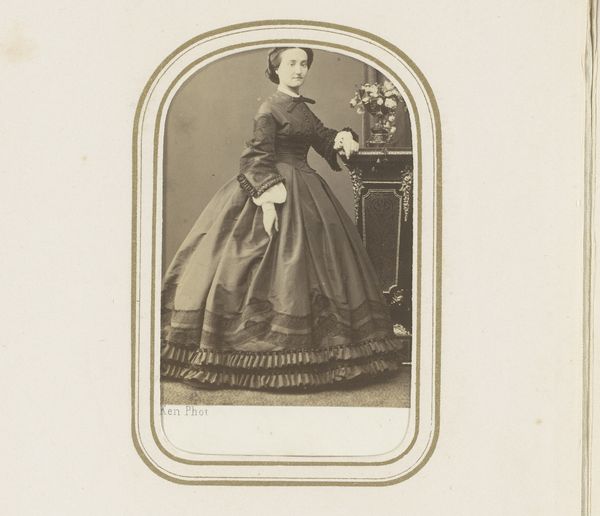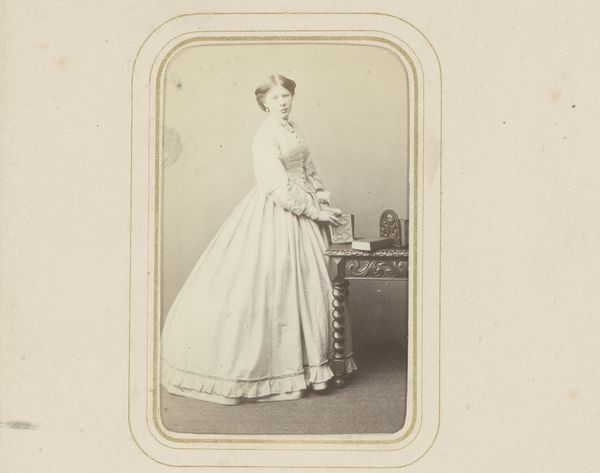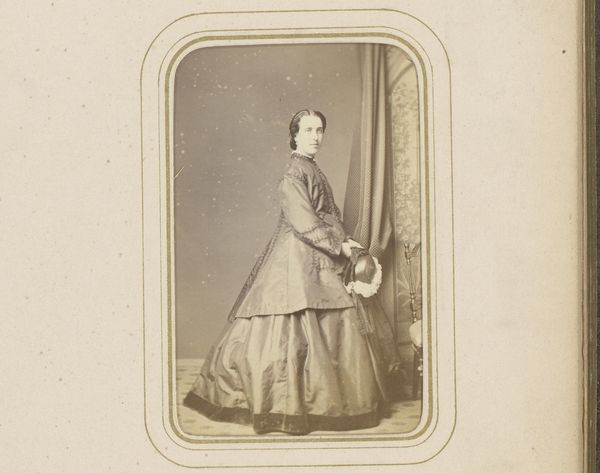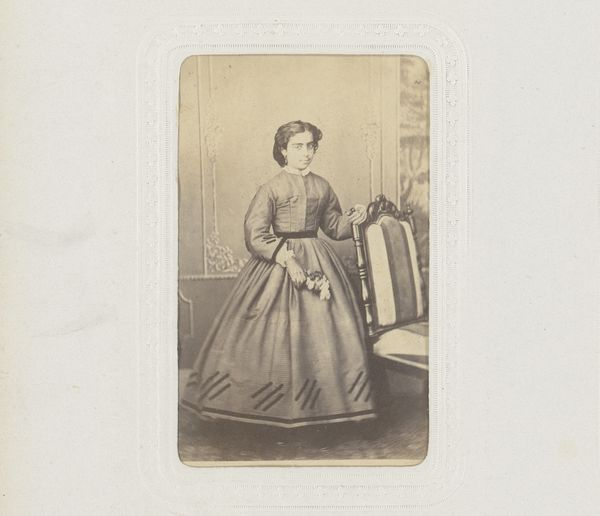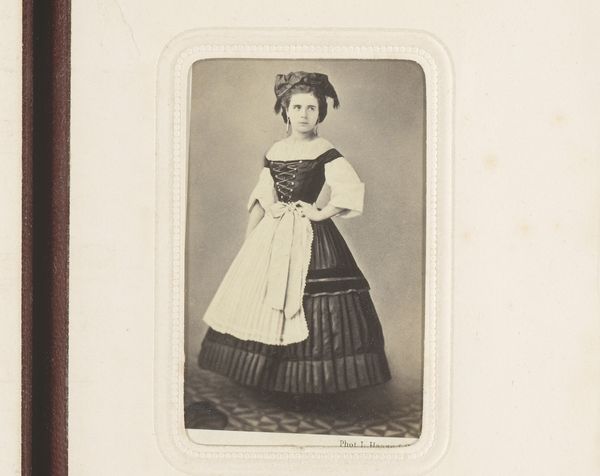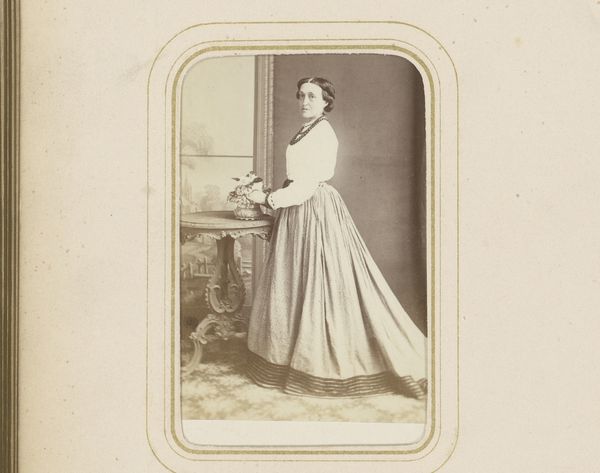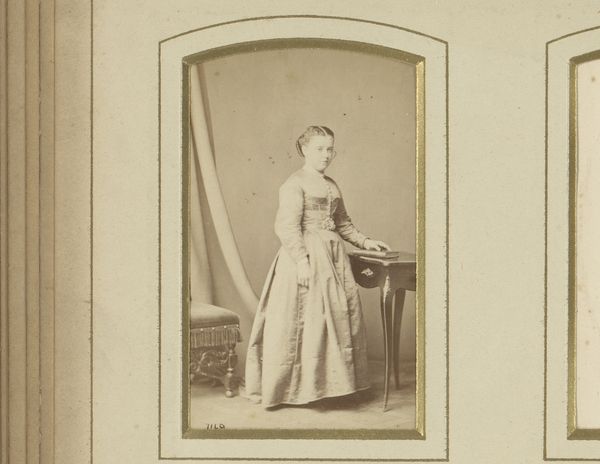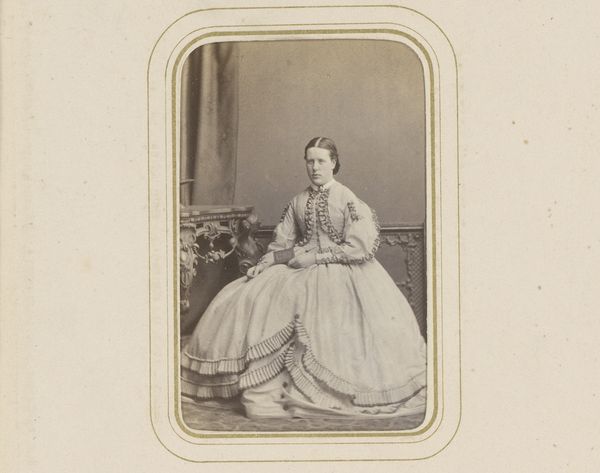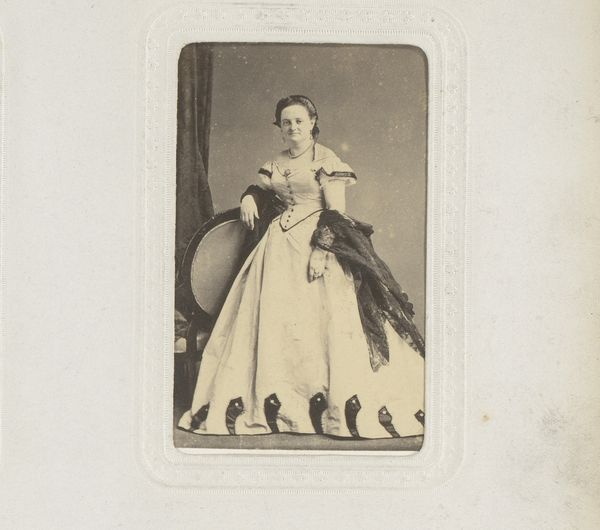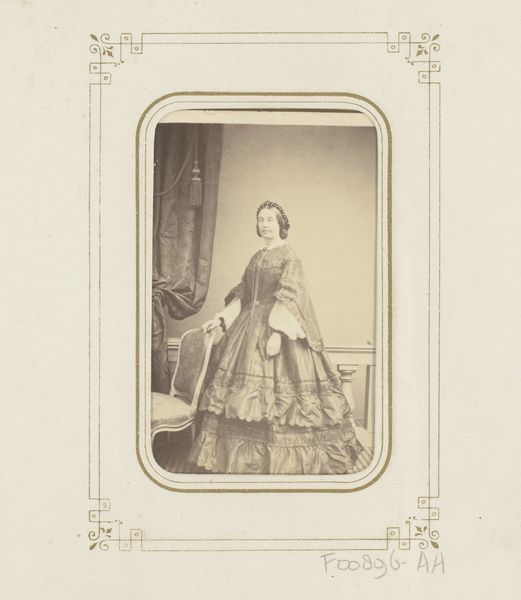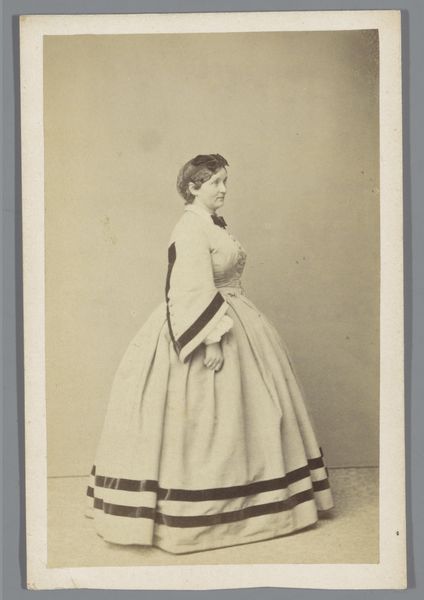
photography, gelatin-silver-print
#
portrait
#
photography
#
historical photography
#
gelatin-silver-print
#
19th century
Dimensions: height 83 mm, width 52 mm
Copyright: Rijks Museum: Open Domain
Editor: Here we have a gelatin-silver print, a portrait of a young woman standing next to a chair, created sometime between 1857 and 1864 by Louis Wegner. The dress really catches the eye, it’s so precisely patterned. What stands out to you? Curator: I'm drawn to the materiality of this piece. Look closely at the dress: those repeated stripes weren't simply decorative; they represent hours of labor, of weaving and stitching, potentially in harsh factory conditions. The dress becomes a marker of its time, indicative of the social structures embedded in the textile industry. Editor: So, you’re saying the material of her dress tells a story beyond just fashion? Curator: Absolutely. The rise of photography itself is a crucial element. Gelatin-silver prints democratized portraiture. How does this compare to painted portraits that were the reserve of the elite? Wegner's work, therefore, becomes less about the individual and more about the burgeoning accessibility afforded by industrialization and photographic technology. The availability of photography challenged the boundaries between craft and art and high and low. Editor: That's a completely different way of looking at it! So the labor of producing the photograph itself is also part of the artwork’s story. Curator: Precisely. Consider the photographer’s labour setting up the shot, preparing the chemicals. The final piece represents that collective effort. What impact do you think wider access to photographs had on self-perception at the time? Editor: I hadn't considered all those production layers. It highlights the huge shift that was happening with the rise of industrial production and how it impacted art and culture. Curator: Indeed. Looking at this image this way encourages us to question not just what we see, but how it came to be, and what forces enabled its creation. Editor: Thanks, that’s a very insightful way to understand the art.
Comments
No comments
Be the first to comment and join the conversation on the ultimate creative platform.
